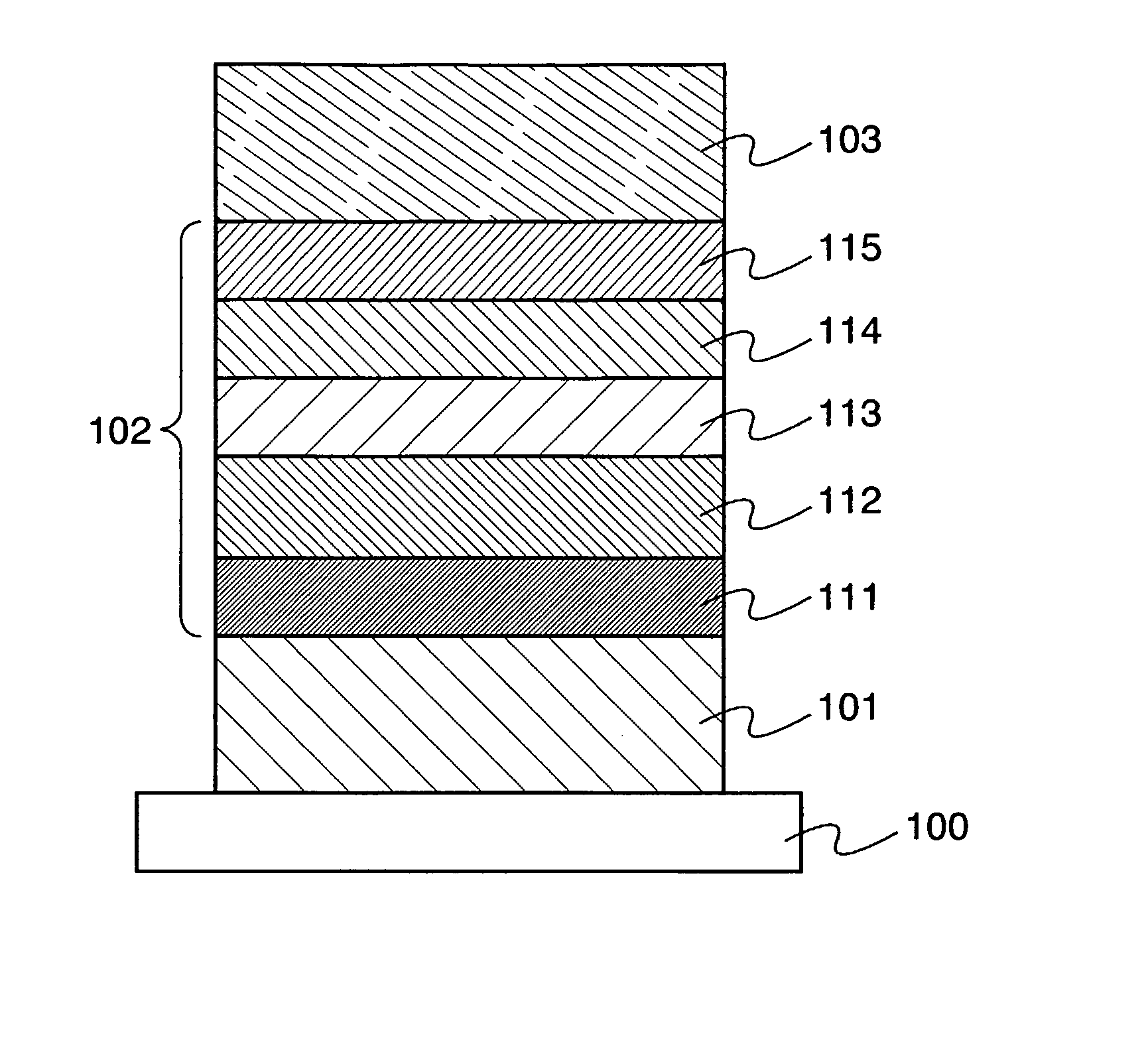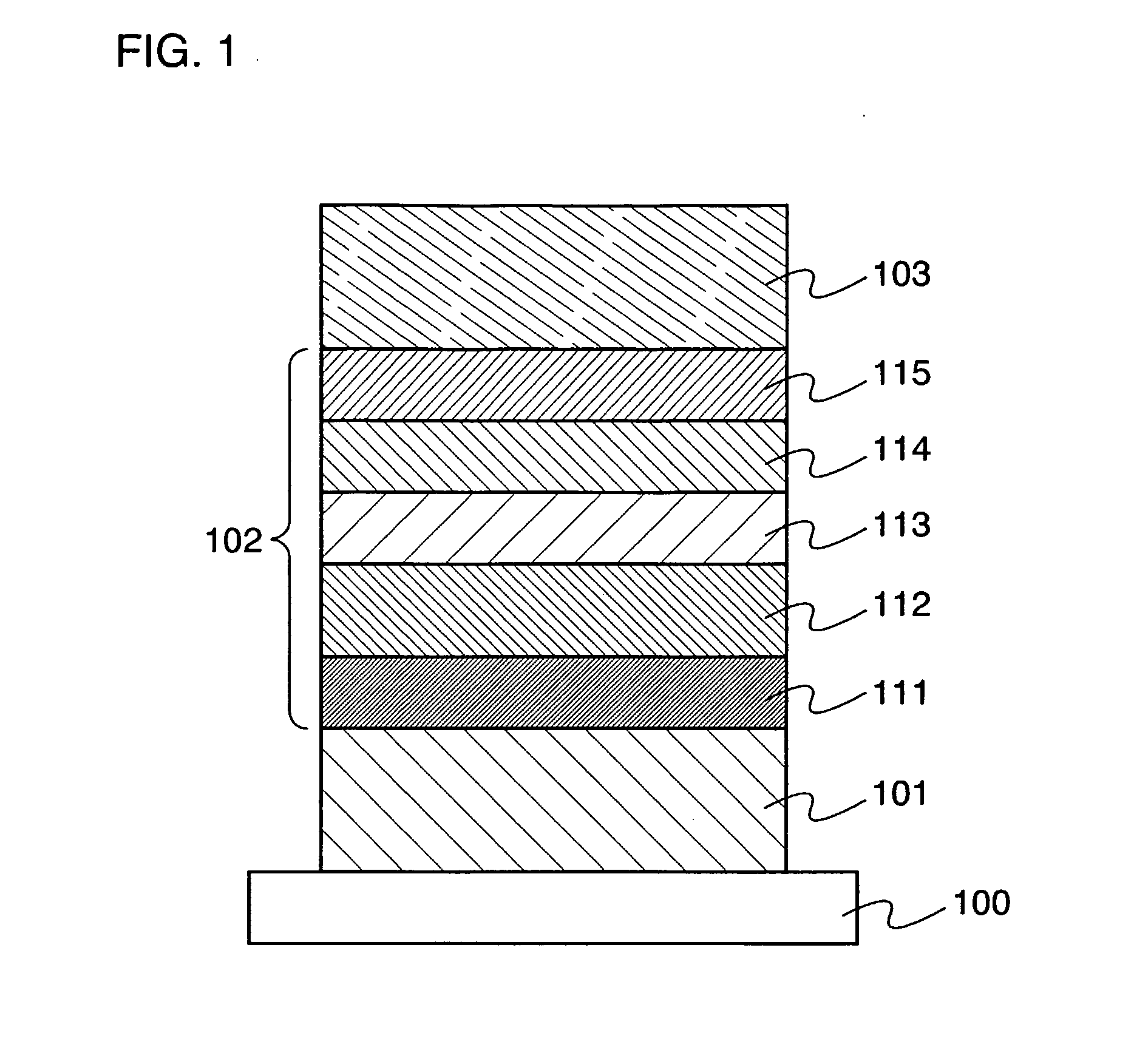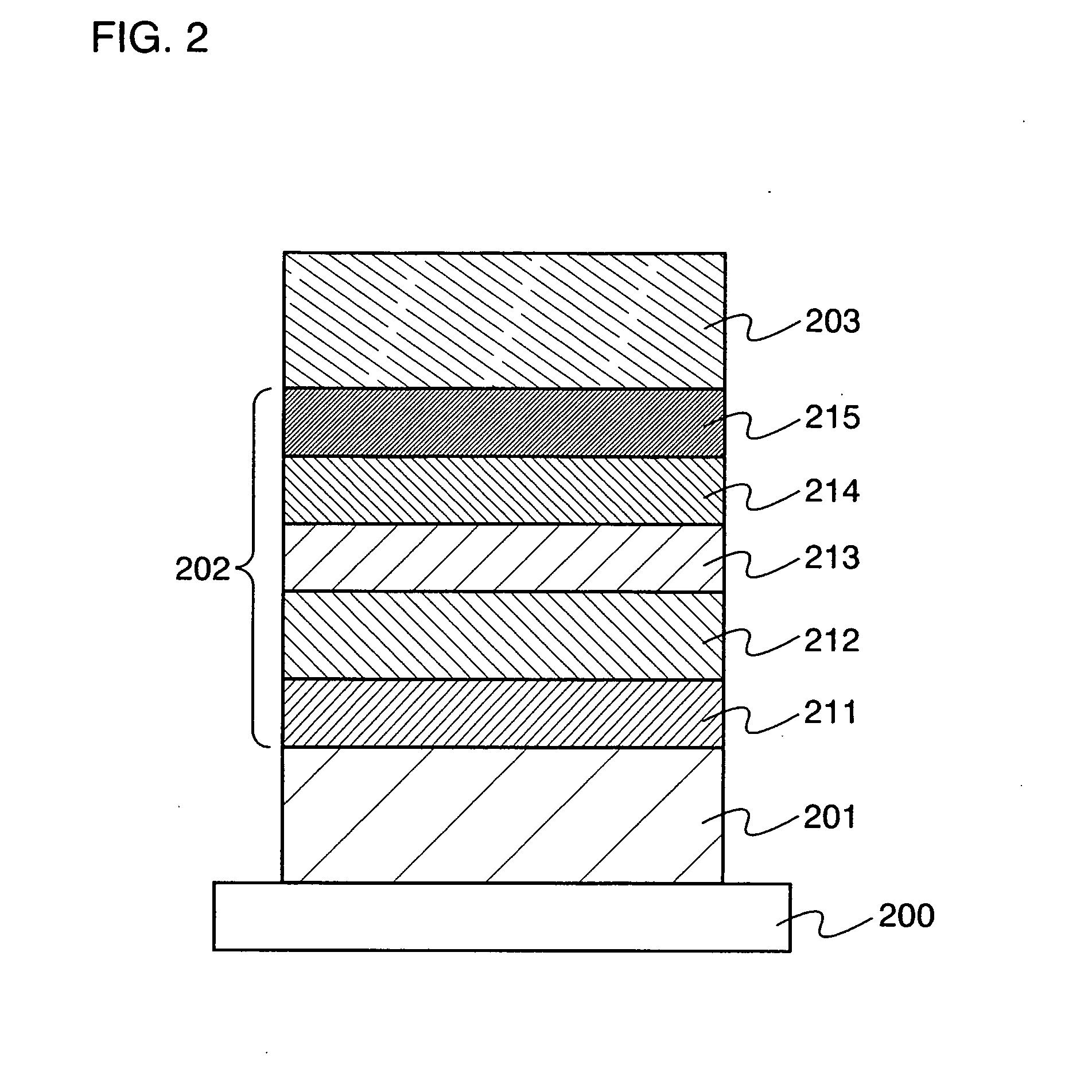Light Emitting Element and Light Emitting Device
a light-emitting element and light-emitting device technology, applied in the field of organome, can solve the problems of wasting at least 75% of injected carriers, not easily generating noise, and -emitting element using a triplet luminescent material has a problem with the lifetime, so as to achieve high luminous efficiency, long lifetime, and large energy gap
- Summary
- Abstract
- Description
- Claims
- Application Information
AI Technical Summary
Benefits of technology
Problems solved by technology
Method used
Image
Examples
embodiment mode 1
[0124] In Embodiment mode 1, a light-emitting element according to the present invention will be described with reference to FIG. 1.
[0125] As shown in FIG. 1, the light-emitting element according to the present invention has a structure in which a first electrode 101 is formed on a substrate 100, a layer 102 including a luminescent material is formed on the first electrode 101, and a second electrode 103 is formed thereon. As a material to be used for the substrate 100 here, a material that is used for a conventional light-emitting element may be used. For example, glass, quartz, transparent plastic, and a flexible substrate can be used. In addition, the first electrode 101 and the second electrode 103 in Embodiment mode 1 function as an anode and a cathode, respectively.
[0126] Namely, the first electrode 101 is formed by using an anode material. As the anode material that can be used here, it is preferable to use a metal, an alloy, an electrically conductive compound, or a mixtur...
embodiment mode 2
[0143] A light-emitting element according to the present invention will be described with reference to FIG. 2.
[0144] The light-emitting element shown in FIG. 2 has a first electrode 201 on a substrate 200 to serve as a cathode, a layer 202 including a luminescent material on the first electrode, and a second electrode 203 on the layer 202 including the luminescent material to serve as an anode. As shown in FIG. 2, the layer 202 including the luminescent material is formed by stacking an electron transporting layer 211, a hole blocking layer 212, a light-emitting layer 213, a hole transporting layer 214, and a hole injecting layer 215 in order, where the electron transporting layer 211 and the hole transporting layer 214 are provided respectively on the first electrode 201 side and on the second electrode 203 side with the light-emitting layer 213 as a center.
[0145] The electron transporting layer 211, the hole blocking layer 212, the light-emitting layer 213, the hole transporting...
embodiment mode 3
[0147] In Embodiment mode 3, a light-emitting element using an organometallic complex according to the present invention is manufactured over a substrate 300 composed of glass, quartz, a metal, a bulk semiconductor, transparent plastics, a flexible substrate, or the like. By manufacturing a plurality of light-emitting elements using the organometallic complex according to the present invention over a substrate, a passive matrix light-emitting device can be manufactured. In addition, other than a substrate composed of glass, quartz, transparent plastics, a flexible substrate, or the like, for example, a light-emitting element in contact with a thin film transistor (TFT) array may be manufactured as shown in FIG. 3 where a light-emitting element 313 is manufactured together with TFTs 311 and 312.
[0148] For the light-emitting element 313, a first electrode 314, a layer 315 including a luminescent material, and a second electrode 316 can be manufactured. Further, a wiring 317 is manufa...
PUM
| Property | Measurement | Unit |
|---|---|---|
| Energy gap | aaaaa | aaaaa |
| Energy gap | aaaaa | aaaaa |
| Energy gap | aaaaa | aaaaa |
Abstract
Description
Claims
Application Information
 Login to View More
Login to View More - R&D
- Intellectual Property
- Life Sciences
- Materials
- Tech Scout
- Unparalleled Data Quality
- Higher Quality Content
- 60% Fewer Hallucinations
Browse by: Latest US Patents, China's latest patents, Technical Efficacy Thesaurus, Application Domain, Technology Topic, Popular Technical Reports.
© 2025 PatSnap. All rights reserved.Legal|Privacy policy|Modern Slavery Act Transparency Statement|Sitemap|About US| Contact US: help@patsnap.com



